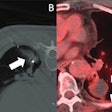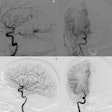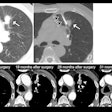Multimedia educational tools could help ease anxiety in patients planning to undergo interventional radiology (IR) procedures, suggest findings published November 11 in the Journal of Vascular and Interventional Radiology.
A team led by Francesca Heiberg-Gibbons, PhD, from Royal Brompton Hospital in London, England, found that animation-based tools are a feasible intervention and can support patient comprehension and reduce anxiety.
“Wider adoption of these tools could support improved patient experience, reduce medicolegal risk, and facilitate consistent consent practices across IR services,” the Heiberg-Gibbons team wrote.
Patients may experience anxiety while undergoing IR procedures, which can lead to inadequate outcomes. These include longer procedure times, the need for more sedation, and postprocedural pain. And while informed consent has ethical and legal implications, the researchers noted that patients may not completely understand what they can expect at the time of procedures.
The team described how a tool called Explain My Procedure (EMP) can help with patient-reported anxiety and understanding of IR procedures. EMP is a multilingual animation platform that describes procedural steps, risks, benefits, and alternative treatments. The researchers introduced this to their IR department in 2022.
The study included 70 adult patients who underwent elective IR procedures between 2022 and 2024. Nine of the total patients had previously undergone IR procedures. Procedures performed on the total cohort included the following: tunneled line insertion, peripherally inserted central catheter placement, lung biopsy, bronchial artery embolization, pleural drainage, and radiologically inserted gastrostomy.
The team used the State Trait Anxiety Inventory (STAI) to measure anxiety in the study cohort, with scores of 45 or higher indicating high anxiety.
Of the total patients, 31 viewed the animation and 39 did not. The team reported the following:
16% of patients who watched the animation had high anxiety (STAI ≥ 45) compared with 39% of patients who did not (p = 0.04).
90% of patients who watched the animation reported having a complete understanding of their IR procedure compared with 67% who did not watch the animation (p = 0.02).
Understanding the risks and benefits of the procedure did not differ significantly between the groups.
The study authors highlighted EMP’s implementation as being “straightforward and low-cost,” adding that it needs minimal staff training and can be integrated into existing workflows.
“Multimedia consent adjuncts should not replace clinician-led discussions but can provide a standardized foundation, ensuring that patients consistently receive accurate and comprehensive information,” they wrote.
The team also called for prospective studies to evaluate EMP’s impact on procedural outcomes, patient satisfaction, and workflow efficiency, among other indicators.
Read the full study here.




















